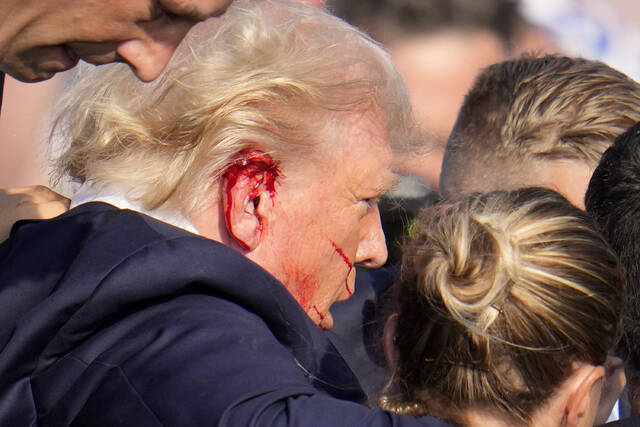Richard Forno: Social media and political violence — how to break the cycle
The attempted assassination of Donald Trump on July 13 added more fuel to an already fiery election season. In this case, political violence was carried out against the party that is most often found espousing it. The incident shows how uncontrollable political violence can be — and how dangerous the current times are for America.
Part of the complication is the contentious and adversarial nature of American politics, of course. But technology makes it more difficult for Americans to understand sudden news developments.
Gone are the days when only a handful of media outlets reported the news to broad swaths of society after rigorous fact-checking by professional journalists.
By contrast, anyone today can “report” news online, provide what they claim is “analysis” of events and combine fact, fiction, speculation and opinion to fit a desired narrative or political perspective.
Today’s internet-based narratives also often involve personal attacks either directly or through inference and suggestion — what experts call “stochastic terrorism” that can motivate people to violence. Political violence is the inevitable result — and has been for years, including attacks on U.S. Rep. Gabby Giffords, former House Speaker Nancy Pelosi’s husband, Paul, the 2017 congressional baseball practice shooting, the Jan. 6, 2021 insurrection, and now the attempted assassination of a former president running for the White House again.
As a security and internet researcher, it was entirely predictable to me that within minutes of the attack, right-wing social media exploded with instant-reaction narratives that assigned blame to political rivals and the media, or implied that a sinister “inside job” by the federal government was behind the incident.
The bloodied former president stood up and delayed his Secret Service evacuation for a fist-pumping photo before leaving the rally, and his campaign issued a defiant fundraising email later that evening. This led some Trump critics to suggest the incident was a “false flag” attack staged to earn a sympathetic national spotlight. Others claimed the incident fits into Trump’s ongoing messaging to supporters that he’s the victim of persecution.
It’s long been known that internet narratives, memes and content can spread around the world like wildfire well before the actual truth becomes known. Unfortunately, those narratives, whether factual or fictional, can get picked up — and thus given a degree of perceived legitimacy and further disseminated — by traditional news organizations.
Many who see such messages, amplified by both social media and traditional news services, often believe them — and some may respond with political violence or terrorism.
Several threads of research show that there are some ways regular people can help break this dangerous cycle.
In the immediate aftermath of breaking news, it’s important to remember that first reports often are wrong, incomplete or inaccurate. Rather than rushing to repost things during rapidly developing news events, it’s best to avoid retweeting, reposting or otherwise amplifying online content right away. When information has been confirmed by multiple credible sources, ideally across the political spectrum, then it’s likely safe enough to believe and share.
In the longer term, as a nation and a society, it will be useful to further understand how technology and human tendencies interact. Teaching schoolchildren more about media literacy and critical thinking can help prepare future citizens to separate fact from fiction in a complex world filled with competing information.
Social media companies are part of the potential solution, too. In recent years, they have disbanded teams meant to monitor content and boost users’ trust in the information available on their platforms. Recent Supreme Court rulings make clear that these companies are free to actively police their platforms for disinformation, misinformation and conspiracy theories if they wish. But companies and purported “free speech absolutists” including X owner Elon Musk, who refuse to remove controversial, though technically legal, internet content from their platforms may well endanger public safety.
Traditional media organizations bear responsibility for objectively informing the public without giving voice to unverified conspiracy theories or misinformation. Ideally, qualified guests invited to news programs will add useful facts and informed opinion to the public discourse instead of speculation. And serious news hosts will avoid the rhetorical technique of “just asking questions” or engaging in “both-siderism” as ways to move fringe theories — often from the internet — into the news cycle, where they gain traction and amplification.
Understandably, these are not instant remedies. Many of these efforts will take time — potentially even years — and money and courage to accomplish.
Remove the ads from your TribLIVE reading experience but still support the journalists who create the content with TribLIVE Ad-Free.

